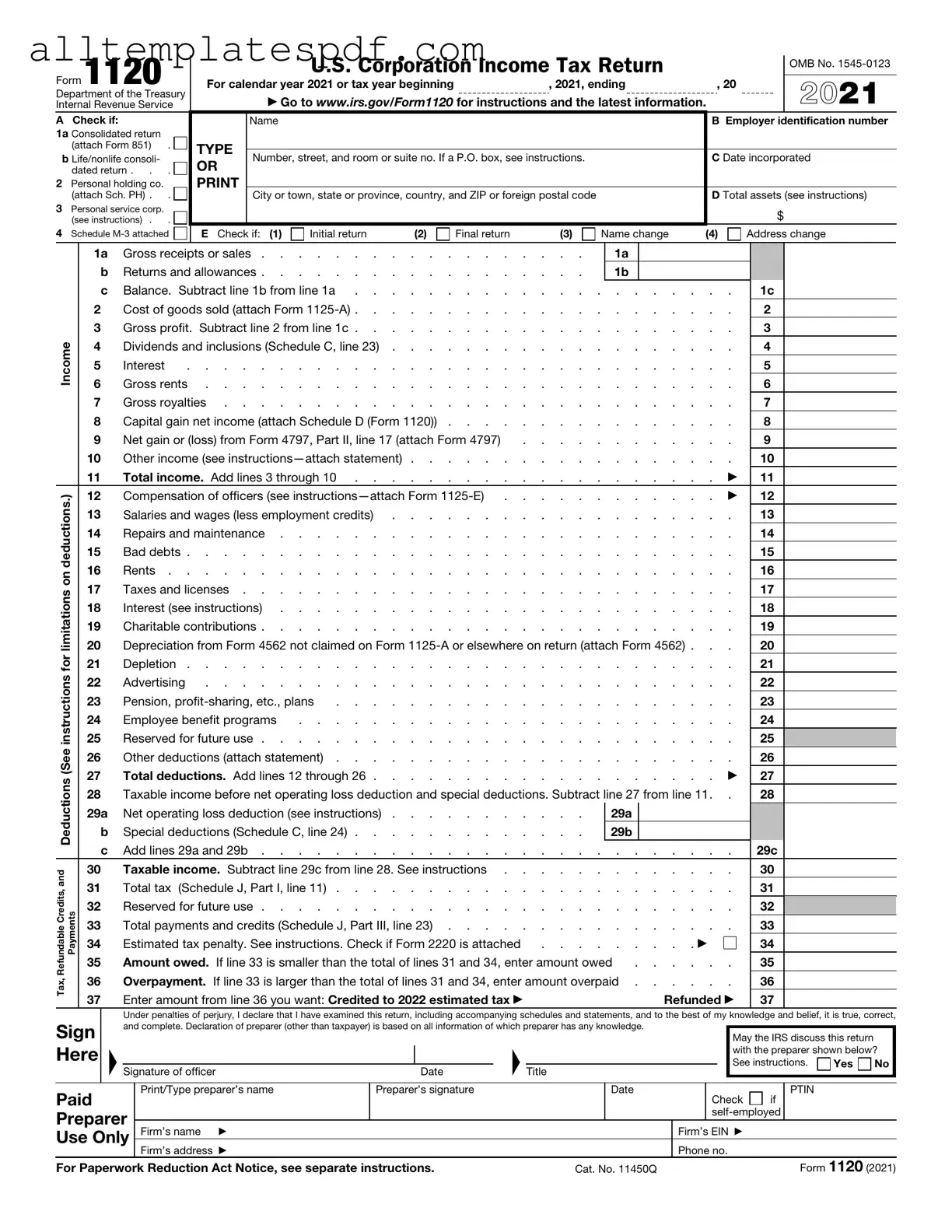Filling out the IRS Form 1120, which is used by corporations to report their income, can be a complex task. Many individuals and businesses make common mistakes that can lead to delays, penalties, or even audits. Understanding these pitfalls is crucial for ensuring compliance and avoiding unnecessary complications.
One frequent mistake is failing to report all income. Corporations must include all sources of income, including sales, interest, and dividends. Omitting any income can raise red flags with the IRS, potentially leading to penalties. It’s essential to keep thorough records and ensure that every dollar earned is reported accurately.
Another common error is incorrectly calculating deductions. Corporations can deduct a variety of business expenses, but these must be legitimate and properly documented. Many people mistakenly claim expenses that are not deductible or miscalculate the amounts. This not only affects the tax liability but can also lead to audits if the IRS questions the legitimacy of these deductions.
Many filers also overlook the importance of signing the form. It may seem trivial, but an unsigned Form 1120 is considered incomplete. This oversight can delay processing and result in penalties. Always double-check to ensure that all required signatures are present before submission.
Another mistake involves using the wrong tax year. Corporations must ensure they are filing for the correct tax year. Filing for the wrong year can lead to confusion and potential issues with the IRS. It’s important to verify the tax year before completing the form.
Moreover, neglecting to include all necessary schedules can be detrimental. Depending on the corporation's activities, additional schedules may be required to provide a complete picture of the financial situation. Failing to include these can lead to incomplete filings and further inquiries from the IRS.
In addition, not keeping up with changes in tax laws can lead to errors. Tax laws frequently change, and it’s vital to stay informed about any updates that may affect how the Form 1120 should be filled out. Relying on outdated information can result in mistakes that could have been easily avoided.
Finally, many people underestimate the importance of reviewing the form before submission. A thorough review can catch simple mistakes, such as typos or miscalculations, that could have significant consequences. Taking the time to carefully examine the completed form can save a lot of trouble down the line.
